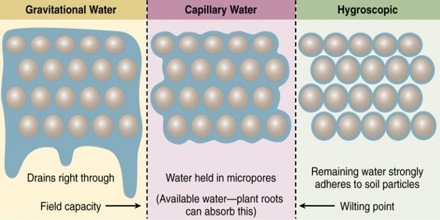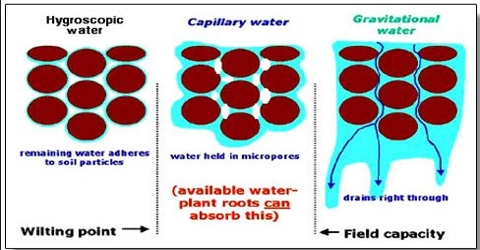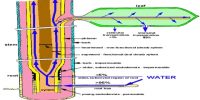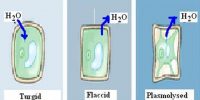In higher plants, the main and only source of water is soil water. The rain water is soil water. The rain water is the only source of soil water. The soil water may be of four types:
Gravitational water: The major part of the soil water gained from rain or irrigation goes deep in to the soil. This water is drained away by gravity. Thus plants cannot absorb this water. Gravitational water that moves through soil under the influence of gravity and must be removed from the soil before this can attain field capacity.

Hygroscopic water: This water remains around the soil particle vapor form. This water is not fit for absorption. Hygroscopic water absorbed from the atmosphere and held very tightly by the soil particles, so that it is unavailable to plants in amounts sufficient for them to survive.
Capillary Water: The structure and organic matter of the soil enables the soil to hold water against the force of gravity. This water that remains in the soil after gravitational water is drained out and that is in the form of a film around the soil grains.This water is call capillary water.
Imbibitional water: Soil particles can hold some water due to their coloidal properties. This water is also absorbable.















